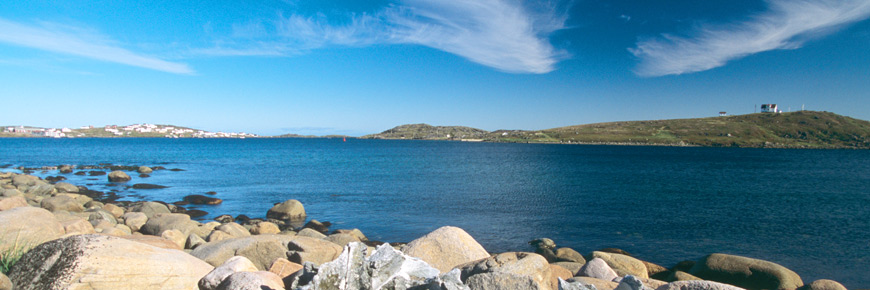
Red Bay Basque Whaling Station
Newfoundland and Labrador
Date of Inscription: 2013
Every year from the 1540s to the early 1600s, as many as two thousand Basque men and boys left their home in southern France and northern Spain and sailed across the North Atlantic Ocean. Their lucrative destination was some four thousand kilometres away in eastern Canada, along Labrador’s Strait of Belle Isle and Quebec’s Lower North Shore. Backed by ship owners and outfitters, the aim of their voyages was to hunt for North Atlantic and Greenland Right whales, render the blubber into oil on site, package it for transport, and bring it back home for market. Whale oil was a commodity highly prized in Europe as a brighter burning lamp oil and as a serviceable lubricant for leather products and an additive for paints, varnishes, and soap. The story of this industrial-scale whaling activity is thoroughly documented as an early example of economic exploitation of rich North American natural resources by European commercial interests.
Justification of outstanding universal value
The Red Bay Basque Whaling station was designated as a World Heritage site by UNESCO’s World Heritage Committee under the following criteria:
Criterion (iii): Red Bay Basque Whaling Station is an outstanding example of the tradition of whale hunting established by the Basques in the 16th century for the production of oil which was transported for sale in Europe. In terms of the diversity of its archaeological remains, this is the most extensive, best preserved and most comprehensive whaling station of this type.
Criterion (iv): Red Bay Basque Whaling Station constitutes a fully intelligible ensemble of archaeological elements illustrating the establishment of a proto-industrial process of large-scale production of whale oil, during the 16th century.
Full description
Archaeological excavations carried out on land and underwater show that during the peak whaling periods of the 1580s upwards of a thousand men were working out of the whaling station at Red Bay, Labrador alone. This port, known to the Basques as Butus or Grand Bay, would have been the largest in the world at that time. The extensively used site contains all of the major elements associated with Basque whaling activity overseas; its traditions and techniques. (It is an industry the Basque would thrive in globally for three centuries). Uncovered remains include a network of more than a dozen shore stations which typically were comprised of rendering ovens, where whale fat was rendered into oil in copper cauldrons over fire pits, cooperages, workshops, temporary dwellings, and wharves. A cemetery and lookout sites are also present. Period artefacts and a massive assemblage of bowhead and right whale bones complete the collections. Also discovered in the Red Bay harbour itself, were the well-preserved remains of a number of vessels that provide an unparalleled illustration of 16th century Iberian shipbuilding technology, including four whaling ships (galleons) and a number of smaller boats used in the whale hunt.
After several decades of prosperity, Basque whaling in Canada began to decline in the final years of the 16th century. Many factors led to this decline, among them, overhunting, discovery of new whaling grounds elsewhere, climatic change, and changing political circumstances. The collective body of knowledge gained from years of terrestrial and underwater research at Red Bay has dramatically changed the understanding of the beginning of large-scale and overseas whaling, as well as the knowledge of the early European history of North America, particularly the role that the Basque played in it.
More Information
Parks Canada:
Red Bay National Historic Site of Canada
World Heritage Centre:
Related links
- Anticosti, Quebec
- Tr’ondëk-Klondike, Yukon
- Writing-on-Stone / Áísínai’pi
- L’Anse aux Meadows National Historic Site
- Nahanni National Park Reserve
- Dinosaur Provincial Park
- Kluane / Wrangell-St.Elias / Glacier Bay /...
- Head-Smashed-In Buffalo Jump
- SG̱ang Gwaay
- Wood Buffalo National Park
- Canadian Rocky Mountain Parks
- Historic District of Old Québec
- Gros Morne National Park
- Old Town Lunenburg
- Waterton-Glacier International Peace Park
- Miguasha National Park
- Rideau Canal
- Joggins Fossil Cliffs
- Landscape of Grand Pré
- Mistaken Point
- Pimachiowin Aki
- Date modified :